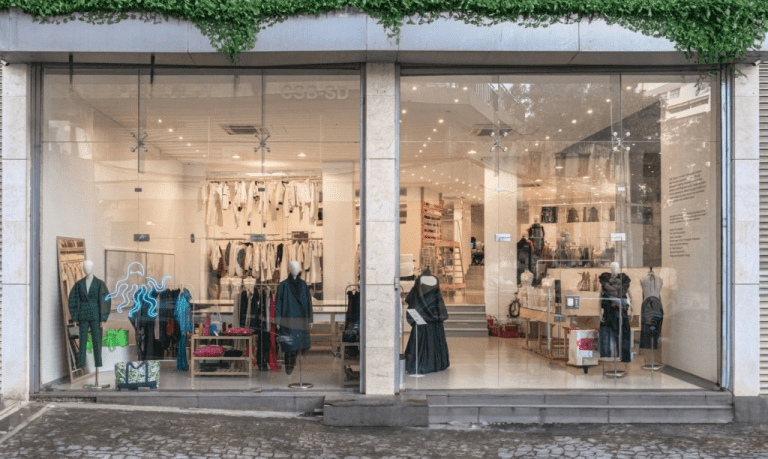In the heart of Beirut, a quiet revolution in fashion education has been unfolding for over a decade. Creative Space Beirut (CSB) — founded by designer and educator Sarah Hermez — began as an experiment in merging creativity with social justice, and has since become a model for inclusive, socially engaged design.
A School Born From Two Worlds
“I had just graduated, having studied Fashion Design at Parsons School of Design and Media Studies at Eugene Lang,” Sarah recalls. “I then moved back to my native Lebanon — a country I had never actually lived in before. There, I split my time between working in refugee camps and at Bokja design studio, pursuing both my passions but in very separate ways.”
That separation — between creativity and community — sparked an idea. “I was looking for a way to merge creativity with social justice, and I recognized how much untapped talent existed in Lebanon. It was my mentor, Caroline Simonelli, who asked the question that changed everything: ‘Why don’t you start a school?’”
That summer, Simonelli flew to Beirut, and together they launched a pilot project that evolved into Creative Space Beirut. “From its founding to now, the mission has remained the same — to provide free, high-quality design education to talented youth who would otherwise be denied the opportunity,” she said. “Over time, CSB has become not just a school, but a community and ecosystem that nurtures designers into launching their own brands, connects them with global opportunities, and uses fashion as a language for cultural exchange and social impact.”
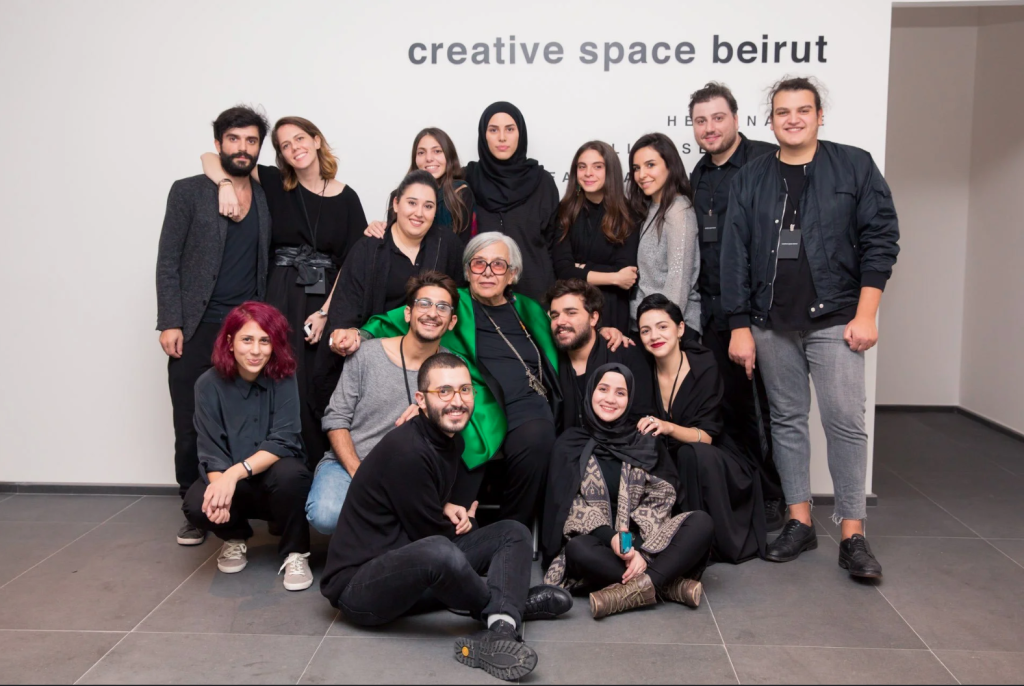
Redefining Inclusivity in Fashion Education
For Sarah, inclusivity isn’t a buzzword — it’s a call to rebuild the system from the ground up. “In the past, talented aspiring designers could gain experience as apprentices and gradually work their way up,” she explained. “But higher education eventually replaced apprenticeships, and that came with a price tag that most people couldn’t afford.”
“Beyond graduation, the fashion world itself is prohibitively expensive — with the cost of resources and an entrenched elitism that keeps many people out. For me, inclusivity means breaking down these barriers and opening the door to diverse visions and voices. It’s about actively transforming the structure of the industry so that its benefits extend far beyond Creative Space Beirut.”
A Story in Every Stitch
If one story captures the spirit of CSB, it’s that of Amir Al Kasm, a Syrian refugee who joined the school at just 16. “Initially timid and reserved, his talent quickly became evident,” Sarah said. “Through the program’s support, Amir grew into a confident, highly skilled designer who spent long hours honing his craft.”
After graduating, Amir joined renowned designer Krikor Jabotian, gaining couture experience before launching his own brand. “He went on to develop collections sold through our boutique and online shop and led upcycling collaborations with international labels like Kilometre Paris,” she added.
His biggest milestone came in 2023, when he won the Fashion Trust Arabia Prize in the Eveningwear category — securing mentorship, funding, and a retail agreement with Harrods London. “Today, Amir teaches Corsetry and Advanced Draping at the school,” Sarah said proudly. “His journey embodies the transformative power of Creative Space Beirut.”
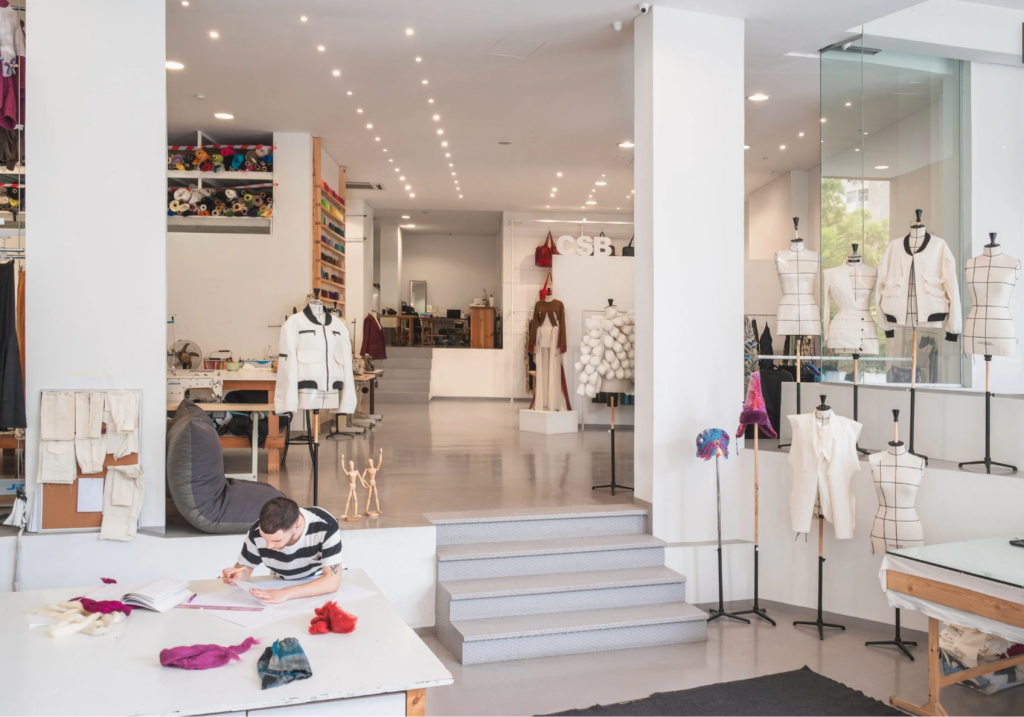
Cultural Identity as a Living Resource
“Cultural identity is at the heart of everything we do,” Sarah explained. “Our student designers come from Syrian, Lebanese, Palestinian, and Armenian backgrounds, and those influences naturally shape their work.”
But for her, heritage is never static. “In our curriculum, heritage is explored through experiential learning — through direct engagement with community, craft, and context. Our students have collaborated with Artisans du Liban, designed costumes for the Baalbeck Festival’s Carmen opera, and explored how identity is represented and reinterpreted in design.”
“The result,” she continued, “is a form of hybrid creativity that mirrors Lebanon itself: layered, diverse, and constantly reinventing. We want our students to see tradition not as a boundary, but as a living resource for innovation.”
Fashion as a Tool for Change
“Fashion is a mirror of society, but it can also be a tool to reshape it,” Sarah said. “In Lebanon, where inequality and instability dictate access to opportunity, fashion becomes a way to reclaim agency.”
“When our students channel their stories, struggles, and aspirations into their collections, they create garments that carry identity, resilience, and meaning. Creativity challenges the mind to imagine beyond the given — it nurtures problem-solving and keeps culture alive.”
On a larger scale, Sarah sees fashion as a form of activism. “Fashion and creativity can challenge stereotypes, shift economies toward ethical practices, and amplify underrepresented voices. They’re both personal and political — reflecting the world as it is, while daring to propose how it might be.”
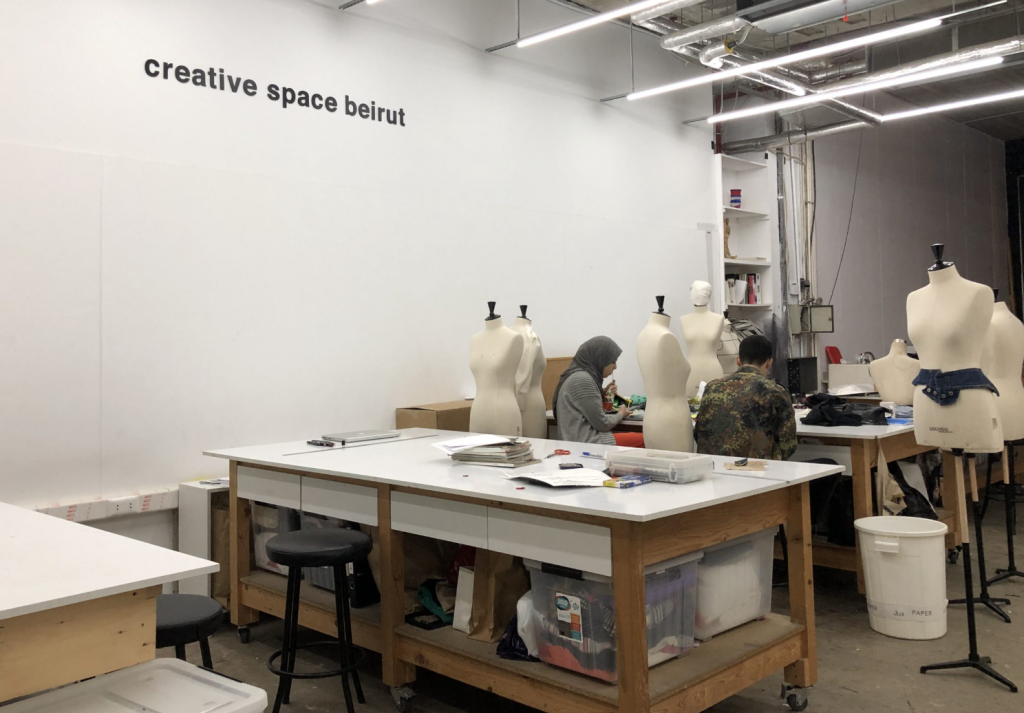
A Distinct Aesthetic: Layered, Experimental, Social
“What sets our design aesthetics apart is the diversity of voices behind them,” Sarah explained. “Each student brings authenticity and depth that can’t be replicated in more conventional settings.”
She encourages her students to take risks. “We push them to experiment, to challenge traditional narratives, to collaborate with artisans and industry partners. Their work is grounded in community and craft, but always driven by curiosity.”
“As a result,” she said, “the aesthetics that emerge from Creative Space Beirut are layered, experimental, socially engaged, and deeply personal — reflecting both individuality and our collective spirit.”
Looking Ahead: Building a Permanent Creative Hub
“My vision is for CSB to grow into a permanent campus — a creative hub with dedicated maker spaces, workshops, and studios,” Sarah shared. “It should be open not only to our students but to the wider community.”
Her goal is to expand across disciplines. “Beyond fashion, I want to include other creative fields, offering programs that reflect the breadth of design practices in the region. We want to stay true to our founding principles while scaling globally — nurturing talent, fostering collaboration, and shaping creative futures.”
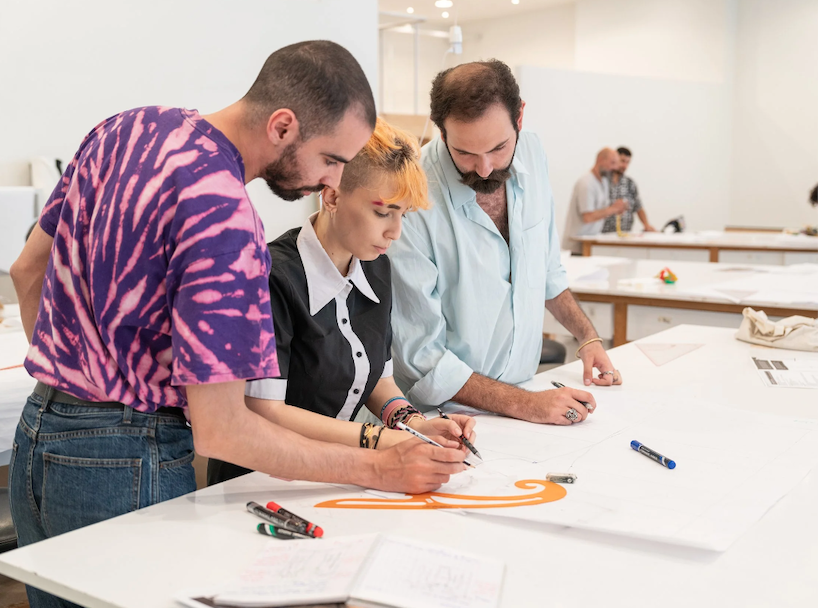
Challenges and the Road to Sustainability
One of Sarah’s biggest challenges is sustaining free education in a region marked by volatility. “Funding often shifts toward immediate humanitarian crises,” she said. “It’s difficult to secure long-term support, even though education is an essential lifeline.”
Integrity, too, remains a cornerstone. “We refuse to dilute the quality of our three-year program just to fit donor requirements,” she stressed. To adapt, CSB is diversifying its funding model through donors, partnerships, and internal revenue streams. “Our goal is not just to survive, but to grow.”
Technology, Innovation, and Ethics
CSB is also embracing the digital frontier. “AI, digital fashion, and virtual platforms open up exciting possibilities,” Sarah said. “AI can minimize waste through smarter pattern-making and predictive analysis. Digital fashion allows us to prototype without physical samples, cutting environmental impact.”
“Virtual platforms connect our students globally, creating visibility and collaboration opportunities. Beyond sustainability, these tools democratize access — letting emerging designers compete internationally, experiment freely, and build their presence. But technology must be used responsibly, balancing innovation with ethics and community.”
Creativity as Connection
When asked what message she wants every student to carry forward, Sarah answers without hesitation:
“I want every student to understand that creativity isn’t just about self-expression — it’s about connection. Fashion doesn’t exist in isolation; it lives in dialogue with people, place, and time. Collaboration makes your work stronger. And above all, use your creativity for good. Design can be a powerful tool for change. Never lose sight of your ability to give back, to contribute, and to make the world not just more beautiful, but more just.”
WE ALSO SAID THIS: Don’t Miss… Inside Beirut’s “DIVAS” Exhibition: A Tribute to the Women Who Shaped Arab Music


